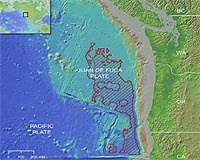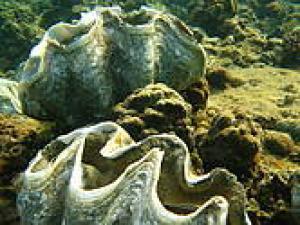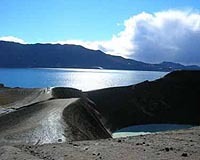A group of scientists has used deep ocean-floor drilling and experiments to show that volcanic rocks off the West Coast and elsewhere might be used to securely imprison huge amounts of globe-warming carbon dioxide captured from power plants or other sources.
In particular, they say that natural chemical reactions under 78,000 square kilometers (30,000 square miles) of ocean floor off California, Oregon, Washington and British Columbia could lock in as much as 150 years of U.S. CO2 production. The findings are published today in the
Proceedings of the National Academy of Sciences.

|
| ©Goldberg et al.
|
| Deep-sea basalt region for CO2 burial. Red outline shows where water depth exceeds 2,700 meters and sediment thickness exceeds 200 meters; hatched areas show where sediment thickness exceeds 300 meters. Seamounts and areas near plate boundaries or continental shelf are excluded.
|
Interest in so-called carbon sequestration is growing worldwide. However, no large-scale projects are yet off the ground, and other geological settings could be problematic. For instance, the petroleum industry has been pumping CO2 into voids left by old oil wells on a small scale, but some fear that these might eventually leak, putting gas back into the air and possibly endangering people nearby.

